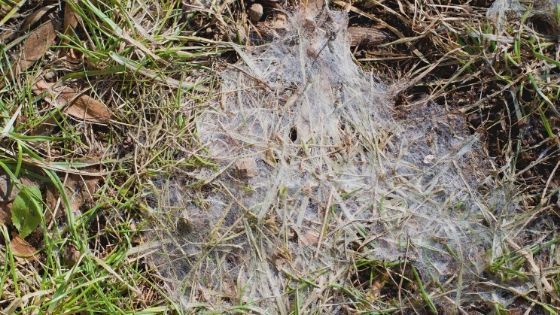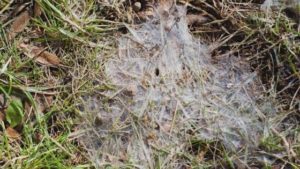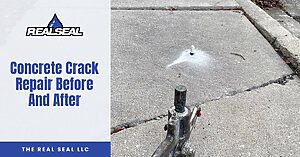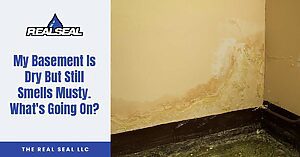We’re all familiar with the messy slush that snow can leave on walkways and roads during the winter. But did you know it can also create an environment conducive to the growth of a lawn disease called snow mold? To keep your yard free of snow mold, heed our tips for identification and prevention below.
Snow Mold Identification
There are two species of snow mold you may deal with. The first is Typhula blight, more commonly known as gray snow mold. It may be caused by either the Typhula incarnate or the Typhula ishikariensis fungus species. Gray snow mold appears as gray patches on the lawn, which have an almost web-like look when you view them up close. This variety is less detrimental to grass because it only affects the blades.
The second type is Fusarium patch, or pink snow mold, which is caused by the fungus Michrodochium nivale. Pink snow mold is quite similar to gray snow mold visually, save for its light pink coloration. However, it’s much more deadly to your lawn, as it attacks the crown from which the blades grow as well as the roots of the plant.
Snow Mold Prevention
Snow mold grows in the moist conditions that snow creates, and it can proliferate in cooler temperatures. The fact that grass often becomes matted down under the snow’s weight makes the lawn even more prone to snow mold infection. For this reason, you’ll most likely see snow mold in the late winter or early spring as the snow melts and reveals the lawn underneath.
You can make your lawn less susceptible to snow mold by mowing it toward the end of fall so that the mold has less cover to grow in. Rake up dead leaves and other organic debris so that decomposers aren’t attracted to the grass itself. Avoid nitrogen-based fertilizers as winter approaches, since these can actually allow snow mold to thrive even more. When snow falls, don’t pile it up in one area of your lawn—this will make the grass underneath more matted and damp.
If gray snow mold does appear, simply rake the affected areas to get the grass blades upright and well-ventilated once more. The air that blows between the blades should dry up the mold and kill it. You can do the same for pink snow mold, but you should also apply fungicides to it to make sure that it’s completely dealt with.
For more home care information, check out The Real Seal’s blog on our website. If you need foundation repair or basement waterproofing in Chicago, contact us to schedule an appointment. We’ll bring our high level of experience and expertise to ensure your home can continue standing solid against cracking and shifting.






